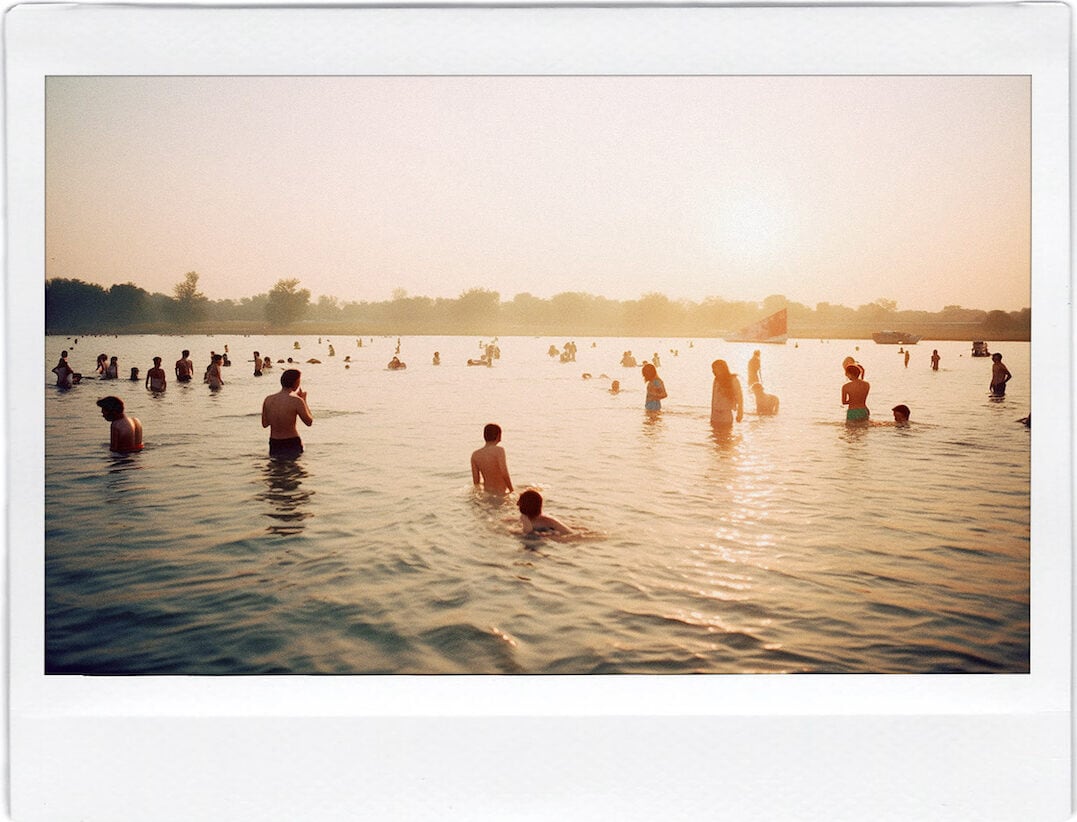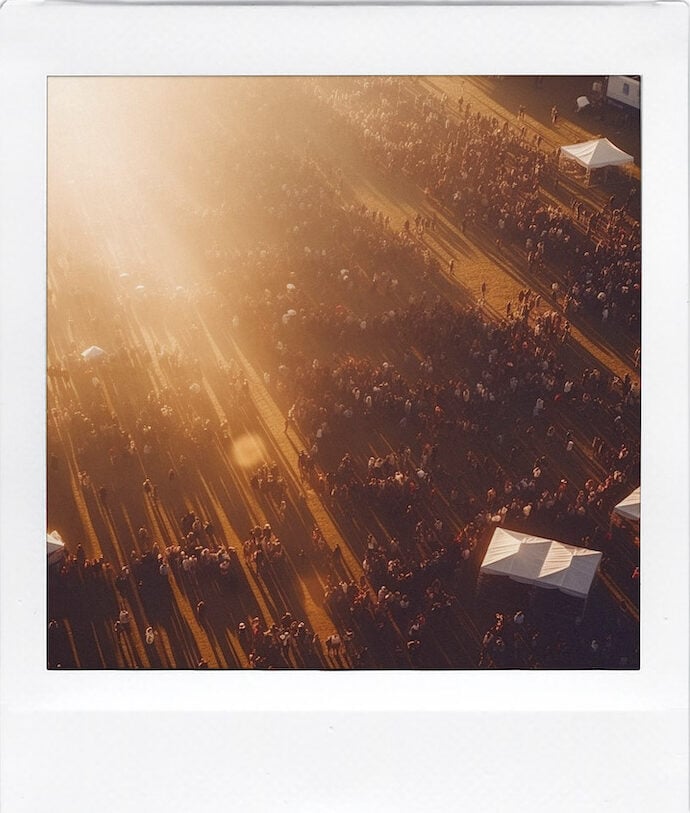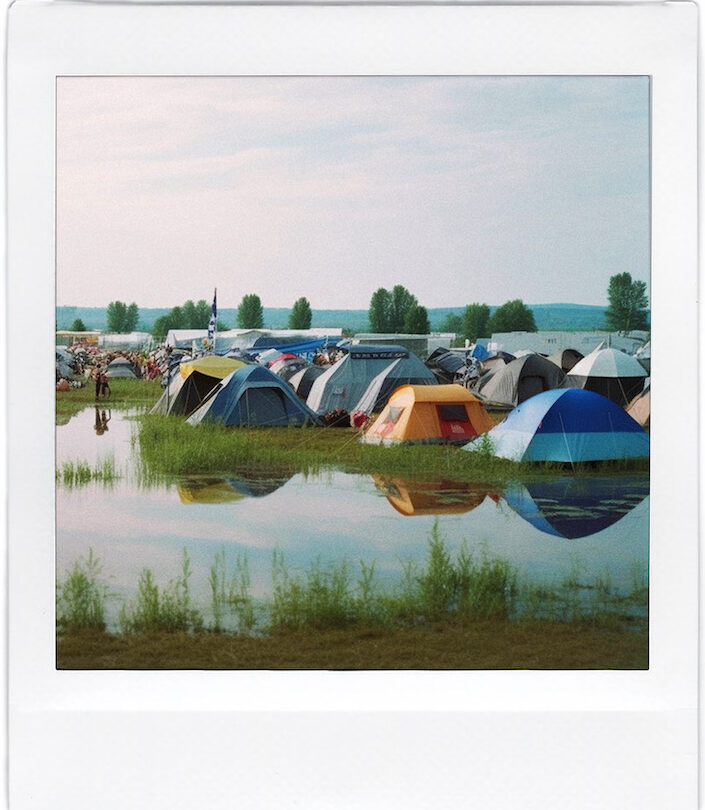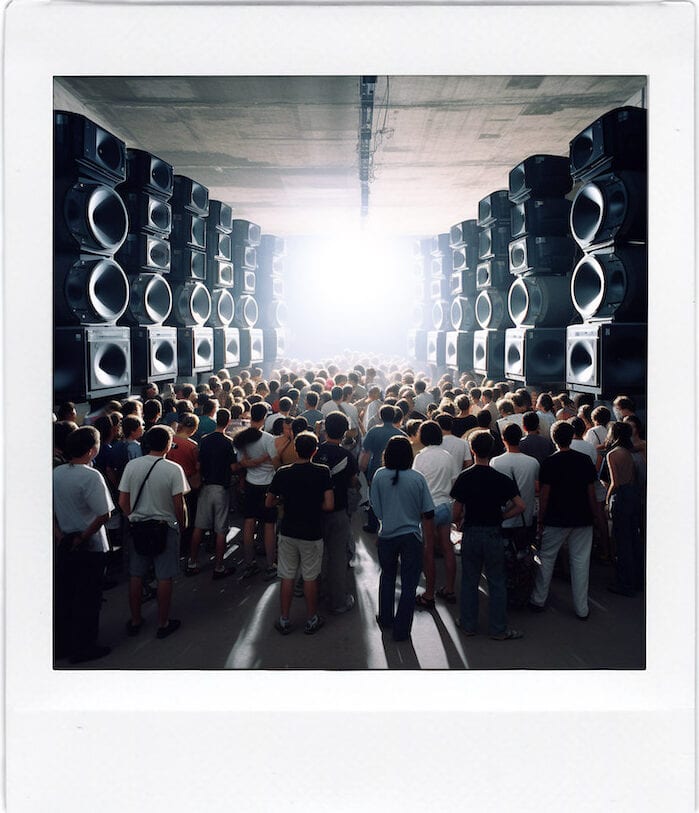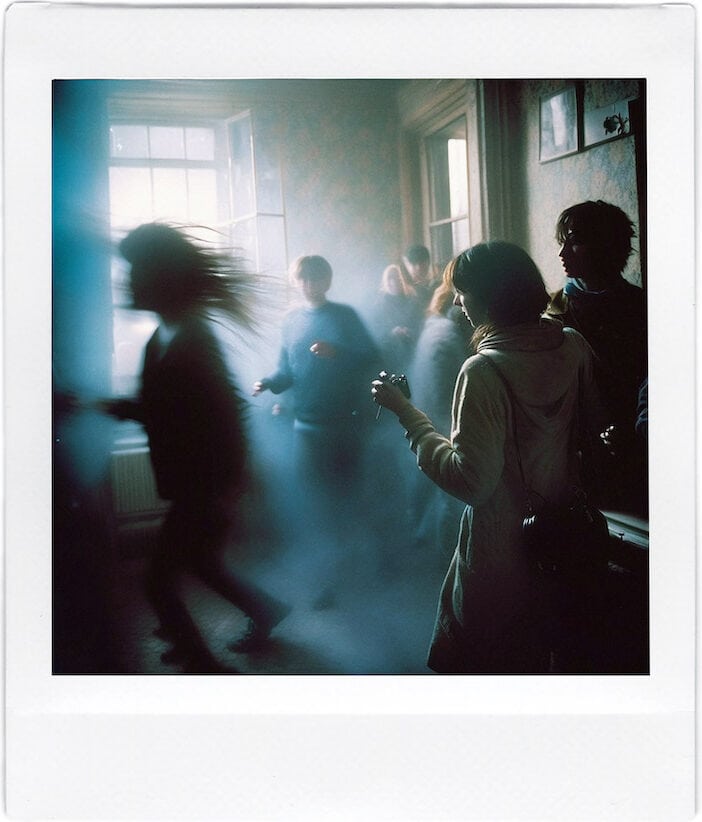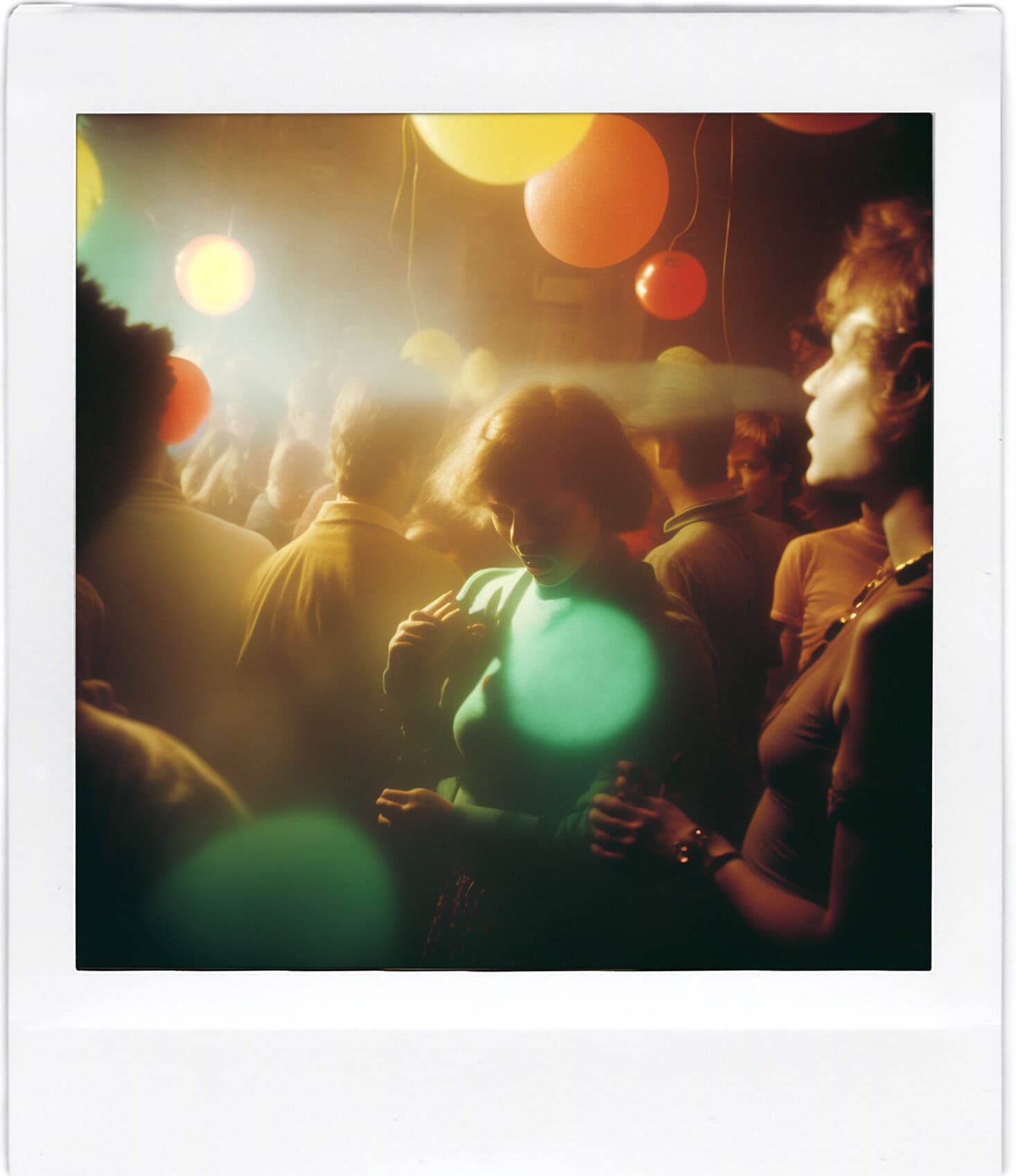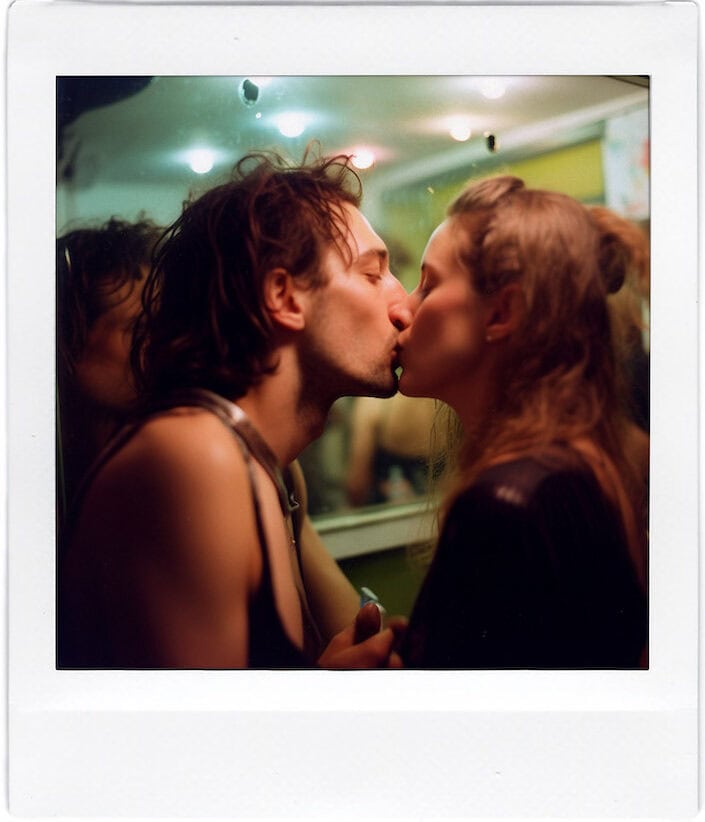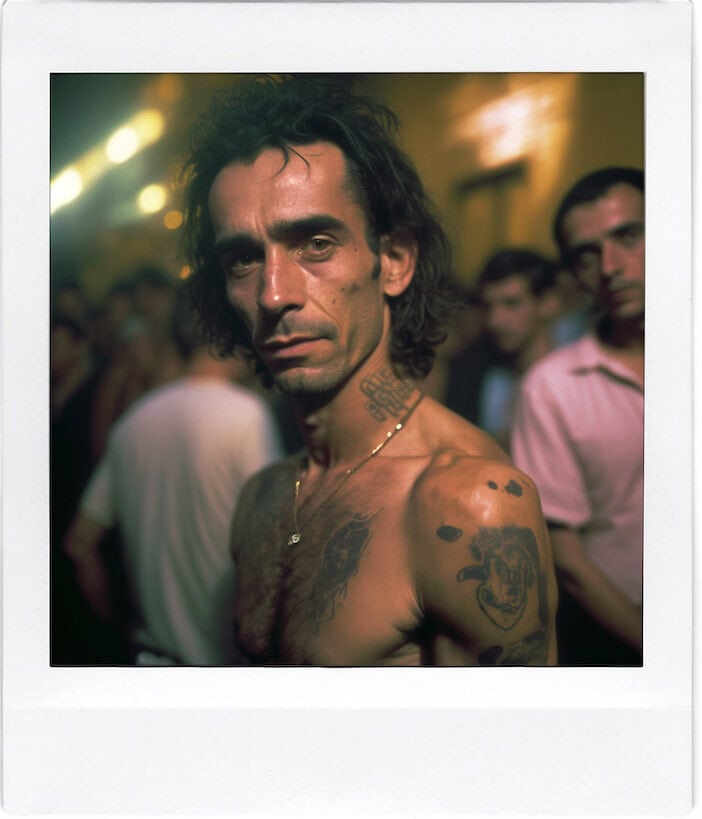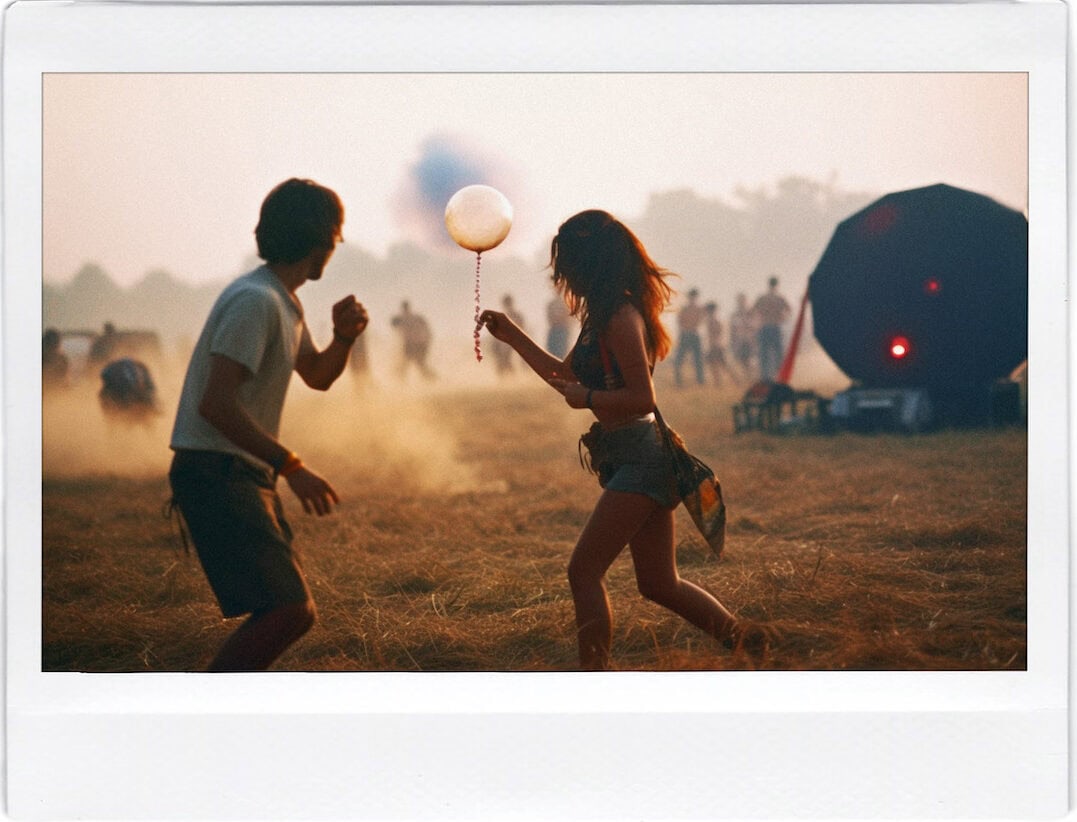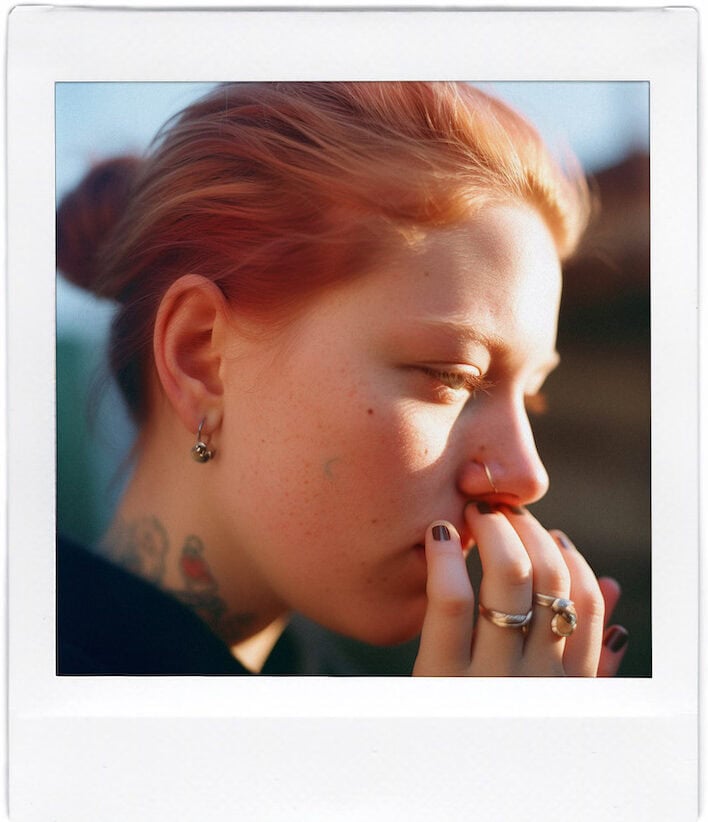Bacci Moriniello is an Italian artistic duo who endeavours to create a space for ambiguous interplay between AI images and pure documentary photography. With their latest project Brave New World they have indeed questioned convivial gatherings and offline encounters in an age of virtual pervasiveness. “We were interested in creating an oxymoron through digitally created images, thus pervasive digital technologies materializing and merging into a physical space where they disguise their own nature.” Taking the cue from the photographic medium limits and obsolescence, they make use of AI to construct new worlds capable of leaving spectators disorientated and experience the ambiguity of the now, specifically in the setting of rave culture, now severely limited in Italy and hindered by a decree then converted into law. Giving a nod to Aldous Huxley’s dystopia (1932) of the same name, Brave New World is a metaphotographic work unveiling a non-existing world constructed on something that “has been”, in Roland Barthes’ terms, or an existing world built on a future freedom from societal control over bodies through biopolitics.
Ilaria Sponda: How have you come together as a duo?
Bacci Moriniello: What brought us together in 2018 is undoubtedly the shared interest in topics related to the pervasiveness of technology in our daily lives and its impact on the very structure of society. After completing our respective education within the technical-scientific field (Flavio Moriniello) and the economic field (Lorenzo Bacci), we both decided, at different times, to embark on a new challenge and specialize in a fine arts academy, with the opportunity to work subsequently in the studios of various artists, including Francesco Jodice. Both experiences served as fertile ground for us to cultivate the seeds of what would soon become the focal point of our research as a duo. Fundamentally, our bond is based on a series of questions: What are we observing? What is the current significance of photographic language and how can we delve deeper into the themes that interest us? What are the inherent limitations of the photographic medium? How are technology and visual arts changing, and as a result, what is happening? Which tools are best suited to address the questions we ask ourselves on a daily basis?
IS: How have you started approaching the AI world? How has it served your project Brave New World both theoretically and in practice?
BM: We have always been fascinated by the universe revolving around technology, inspired by authors who imagine dystopian or utopian futures through books, movies, comics, and video games. Figures such as H.G. Wells, Asimov, Orwell, Huxley, Kubrick, Tarkovsky, Cronenberg, and Ballard have played a fundamental role in our journey. We grew up immersed in the frontiers of science fiction, or rather, what often seemed like science fiction has become the norm today. Just think about how we constantly interact with machines in one way or another…Undoubtedly, our cultural background is reflected in the projects we have worked on in recent years. Starting from 2015/2016, we began to witness significant developments in the field of artificial intelligence. The results, though still in their early stages, hinted at an imminent revolution, a situation we have been experiencing for about a year. In the following years, we have delved into and explored these systems with curiosity both from a technical and sociological perspective. Artificial intelligence as a tool for artistic creation doesn’t particularly interest us, just like any other tool. However, it becomes intriguing when we reflect on the repercussions this technology has on society and the contemporary individual. In general, in our artistic practice, we are interested in exploring the ongoing transformations in society and imagining how they might evolve or change in the future. Additionally, we aim to share reflections and themes with the audience, often through indirect and metaphorical approaches. In the BNW project, we focus on the democratization of the image manipulation process. In other words, we address the fact that manipulating images is no longer limited exclusively to professionals but is accessible to anyone with an interest and relative ease.
IS: What limits and possibilities are intrinsic to the AI medium?
BM: In general, we believe that artificial intelligence shares the main characteristics of any other medium in the history of media. On one hand, it accelerates and facilitates production, but on the other hand, it implies a delegation that reduces creative autonomy. With that being said, the more capable the user is of intervening with the tool, the greater the possibility of reclaiming their own autonomy. We believe that it is important to be passionate and actively handle technology rather than being passive users. Regarding the possibilities, artificial intelligence is currently capable of creating multimedia content with extreme realism, accessible even to non-experts. This field is continuously expanding. The integration of artificial intelligence in various fields, including the creative one, is favored by technological massification. These tools make production accessible to a wider audience. We find this relationship between omnipotence and impotence interesting. Once, the goal was to provide the means of production to as many people as possible. Now, in a historical moment where tools abound, many use the available means primarily for personal self-promotion rather than for collective benefit. This leads to the creation of consumable and low-quality content. Omnipotence often leads to neglecting what is generated, making everything insignificant and devoid of value. In the history of visual representation, there has been a constant pursuit of realism, a path that has gone from cave paintings to traditional painting, from painting to photography, and finally from photography to artificial intelligence. Each technological leap freed the previous medium from its most direct function and allowed for creative and experimental use. The same thing could happen in this context. In conclusion, the true limitation lies in the choices we make regarding the use and approach with this specific tool.
